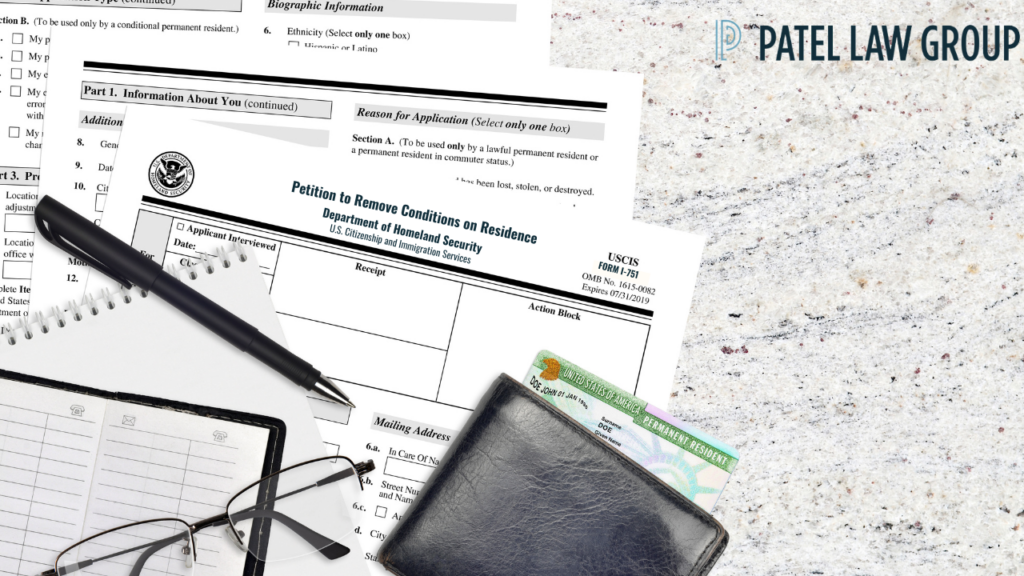Filing Form I-751, the Petition to Remove Conditions on Residence, is a critical step for conditional permanent residents striving to secure their full 10-year green card. While the process might seem straightforward, there are several mistakes an individual can make which could lead to processing delays, requests for additional evidence (RFEs), or even denial. Within this article, we will discuss some of the most common mistakes applicants make when filing their I-751 petition.
-
Incomplete or Incorrect Form Completion
One of the most common errors is submitting an incomplete or incorrectly filled form. The I-751 requires precise information, and even minor mistakes can cause significant delays. Common issues include:
- Leaving vital sections of the form blank, such as date of birth, basis for the petition, etc.
- Incorrectly entering information such as dates and names.
- Failing to sign the form, which will lead to an automatic rejection.
-
Submitting the petition with the wrong form edition
USCIS will periodically update their forms. When the forms are updated, they will list the edition date at the bottom of the form. USCIS will specify which edition is accepted on their website.
-
Incorrect Filing Fee
USCIS will also update their filing fees. This does not occur as often as the form editions. However, it is important to check the USCIS website to confirm the filing fee prior to filing the petition.
In addition, USCIS accepts different payment methods, such as credit cards, personal checks, cashier’s checks, money orders, etc. Review the payment instructions and confirm that the payment method is completed correctly, e.g. checks need to be made out to “US Department of Homeland Security.”
-
Insufficient Evidence of a Bona-Fide Marriage
The primary purpose of the I-751 is to prove that the marriage was genuine and not entered into for immigration purposes. Submitting insufficient evidence can lead to RFEs or denials. Applicants often underestimate the amount and quality of evidence required.
USCIS wants to see that you and your spouse are sharing your lives together. It is not enough to just provide pictures of the couple together. If the marriage has ended and you are filing the I-751 requesting a waiver, it is still essential to provide similar documentation to establish the marriage was bona fide and not entered for an immigration benefit.

-
Missing the Filing Deadline
The I-751 must be filed within the 90-day period before the conditional green card expires. USCIS will likely reject a petition that is filed too early. If you miss the deadline, it is recommended that you file the petition as soon as possible. You will need to explain to USCIS why the deadline was missed. The decision to accept the petition will ultimately be up to the USCIS officer.
For more information on what to do if you miss the I-751 filing deadline, please see our article “What happens if you miss the I-751 deadline?.”
-
Not Applying for a Waiver if Needed
In situations where a joint filing isn’t possible, such as divorce or the death of a spouse, applicants must apply for a waiver. Failing to do so can result in denial. Please see the below article for more information.
Can I Still Get A 10-Year Marriage-Based Green Card If I’m Separated Or Divorced?
-
Ignoring USCIS Requests for Additional Evidence
If USCIS issues a Request for Additional Evidence (RFE), ignoring it or providing insufficient responses can lead to denial. RFEs are an opportunity to strengthen your petition, not something to be taken lightly.
-
Failing to Prepare for a Potential Interview
While not all applicants are called for an interview, being unprepared can be detrimental if one is scheduled. It’s important to understand that there isn’t a standard list of questions, as these can vary from case to case. Ultimately, if marriage is genuine, there’s no need for extensive preparation. However, it’s natural to feel nervous, so being well-prepared can help you feel more confident. We always recommend that our clients review the forms and supporting documents submitted to USCIS. It’s normal to forget specific details, such as exact dates or addresses. If you’re unsure of an answer or can’t recall something, be honest and explain that to the officer. Honesty and familiarity with your case will go a long way toward a successful interview.
Conclusion
Navigating the I-751 process successfully requires careful attention to detail and an understanding of USCIS’s expectations. By avoiding these common mistakes, you can improve your chances of a smooth transition to permanent residency. If you’re unsure about any aspect of the process, please contact me at cprescott@patellegal.com.